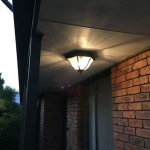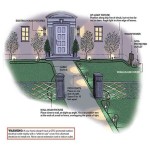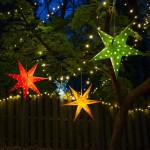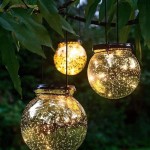How To Design Outdoor Low Voltage Lighting
Outdoor low voltage lighting enhances the beauty and safety of any property. A well-designed system can highlight architectural features, illuminate pathways, and create a welcoming ambiance. This article provides a comprehensive guide to designing an effective and aesthetically pleasing low voltage lighting system.
1. Planning and Assessment
The first step in designing any lighting system is careful planning. Begin by assessing the property and identifying the areas that require illumination. Consider the purpose of the lighting in each area. Is it for safety, highlighting landscape features, or creating a specific mood? Measure the areas to be lit, noting the locations of trees, shrubs, and other obstacles. A sketch of the property with the proposed lighting locations can be invaluable.
2. Choosing the Right Fixtures
Fixture selection is crucial for achieving the desired aesthetic and functionality. Different fixtures serve different purposes. Path lights illuminate walkways, spotlights highlight trees and architectural details, and well lights provide subtle uplighting for landscaping. Consider the style of the home and landscape when choosing fixtures. Materials like brass, copper, and stainless steel offer durability and various aesthetic options. The light output, measured in lumens, should also be considered. Too much light can create glare, while too little light won't provide adequate illumination.
3. Understanding Transformer Requirements
Low voltage lighting systems require a transformer to convert standard household voltage (120V) to a lower voltage, typically 12V. The transformer size is determined by the total wattage of the fixtures. Calculate the total wattage by adding the wattage of each fixture. Choose a transformer with a wattage capacity slightly higher than the total fixture wattage to allow for future expansion or heavier loads. The location of the transformer should be easily accessible for maintenance and protected from the elements.
4. Wiring and Cable Selection
Proper wiring is essential for a safe and functional system. Direct burial cable, specifically designed for outdoor use, should be used. The gauge of the wire (thickness) is important to prevent voltage drop, especially over longer distances. Consult a wire gauge chart and consider the total wattage and distance from the transformer to each fixture when selecting the appropriate gauge. Use wire connectors designed for outdoor use to ensure secure and weatherproof connections. Bury the cable at a depth recommended by the cable manufacturer to protect it from damage.
5. Placement and Installation
Strategic fixture placement is key to achieving the desired lighting effect. Path lights should be spaced evenly along walkways to provide adequate illumination. Spotlights should be positioned to highlight specific features without creating harsh shadows. Well lights should be placed strategically to uplight trees and shrubs. When installing fixtures, ensure they are securely anchored and that the wiring is properly concealed. Consider using stakes, mounting brackets, or burying the fixtures depending on their design and location.
6. Lighting Control Options
Modern low voltage lighting systems offer a variety of control options. Timers automate the on/off cycles of the lights, providing convenience and energy savings. Photocells automatically turn the lights on at dusk and off at dawn. Smart controllers allow for remote control and customization of lighting scenes via a smartphone app. Consider the desired level of control and automation when selecting the control system.
7. Safety Considerations
Safety should always be a priority when working with electricity. Before beginning any installation, turn off the power to the circuit that will supply the transformer. Follow all local electrical codes and manufacturer instructions. Use caution when digging to avoid underground utilities. If unsure about any aspect of the installation, consult a qualified electrician.
Maintaining the system is crucial for longevity and performance. Periodically check the fixtures for damage or debris buildup. Inspect the wiring and connections for any signs of wear or corrosion. Replace any damaged components promptly. Regular maintenance will ensure the system functions safely and efficiently for years to come.

Diy Low Voltage Landscape Lighting Ideas

Creating The Right Look Low Voltage Landscape Lighting For Homes Electrical Contractor

How To Design And Install Low Voltage Outdoor Lighting

Low Voltage Landscape Lighting O Grady S Sterling Va

10 Best Outdoor Lighting Ideas Landscape Design Secrets A Piece Of Rainbow

Sm Landscape Lighting New Jersey

Low Voltage Lights For Lighting Up Your Driveway

Illuminate Your Deck Patio Or Garden With Low Voltage Outdoor Lighting Sposato Irrigation

10 Best Outdoor Lighting Ideas Landscape Design Secrets A Piece Of Rainbow

Low Voltage Lighting In St Louis Landscaping Options







